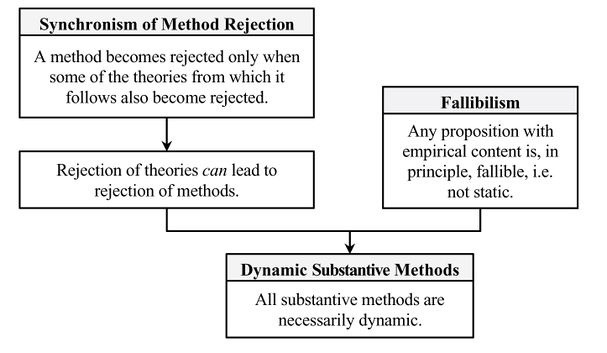Dynamic Substantive Methods theorem (Barseghyan-2015) Reason1
Here is the deduction as it appears in Barseghyan (2015):1p. 220
According to the thesis of fallibilism, accepted in the contemporary epistemology, no contingent proposition (i.e. proposition with empirical content) can be demonstratively true. Therefore, since substantive methods are based on fallible contingent propositions, they cannot be immune to change. Imagine a typical mosaic with an accepted theory and a method that implements the constraints imposed by this theory. It is obvious that the method in question is necessarily substantive (by the definition of substantive method). Now, suppose that there appears a new theory that manages to satisfy the current requirements and, as a result, replaces the accepted theory in the mosaic. Naturally, this new theory imposes new abstract constraints (by the third law). It is conceivable that these new abstract constraints are incompatible with the requirements of the current method. In such an instance, the old method will be replaced by the new one (by the method rejection theorem). In short, a rejection of theories can trigger a rejection of the substantive method. This idea has been already implicit in the synchronism of method rejection theorem. Thus, there are no guarantees that an employed substantive method will necessarily remain employed ad infinitum. Consequently, any substantive method is necessarily dynamic.
This reason for Dynamic Substantive Methods theorem (Barseghyan-2015) was formulated by Hakob Barseghyan in 2015.1
